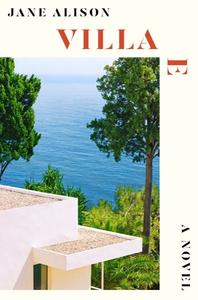
 Jane Alison's fifth novel, Villa E, is an impressionistic work of historical fiction that imagines the fraught relationship between Irish designer Eileen Gray and Le Corbusier, the Swiss-French giant of modernist architecture, surrounding a house on France's Côte d'Azur. The intriguing story of the clash between these two strong-willed artists, despite its brevity, raises some vexing questions about gender relations, creativity, and professional rivalry.
Jane Alison's fifth novel, Villa E, is an impressionistic work of historical fiction that imagines the fraught relationship between Irish designer Eileen Gray and Le Corbusier, the Swiss-French giant of modernist architecture, surrounding a house on France's Côte d'Azur. The intriguing story of the clash between these two strong-willed artists, despite its brevity, raises some vexing questions about gender relations, creativity, and professional rivalry.
In chapters that shift between the perspectives of Eileen and Le Corbusier (known here as "Le Grand"), Alison (Meander, Spiral, Explode), who teaches creative writing at the University of Virginia, describes the self-taught architect Eileen's innovative design of a house that is "intimate and modern but not a machine," that sits above the Ligurian Sea "like a slim white yacht on the rock." One of the house's most striking features is a "spiral staircase like the whorl of a whelk."
In the late 1930s Le Corbusier is invited to lunch by Jean Badovici (identified as "Bado" in the novel), Eileen's sometime lover and collaborator on the house known as E-1027 (its name combining Eileen's and Jean's names in code), and immediately is seized by the distinctive qualities of this "alarmingly elegant, intelligent place" that's "made not only in Le G's own style but an experiment and critique of his work." When Bado invites him for an extended stay alone at the house, he takes the shocking step of covering some of its stark white walls with sexually explicit drawings. Eileen learns of this desecration from Bado, who refuses to remove his friend's work, establishing a stalemate that's not resolved before German soldiers occupy the house during World War II, preventing Eileen from returning. Only decades later does she see the house again, reflecting on the strangeness of "how places that have been sublimated into memory nevertheless still exist in the world."
In framing this controversial encounter, Alison shapes vivid interior lives for her two principal characters. Of the pair, Le Corbusier's is the more substantial, as he oscillates between admiration for Eileen's work and profound creative jealousy. The famed architect also reflects on his marriage and a long history of infidelity that appears to color his view of Eileen and her work. Le Corbusier's obsession with Eileen's creation is so strong that he constructs for himself a small cabin and shack nearby--his "three skinny pine trees and four square meters of sand"--where he lives and works for years. It was there that he died on August 27, 1965, while swimming in the gorgeous sea below. Eileen lived on until 1976. Alison's novel is a provocative glimpse of the short but intense intersection of these two deeply creative and idiosyncratic lives. --Harvey Freedenberg, freelance reviewer
Shelf Talker: Jane Alison's fifth novel is a brief character study of the clash between two key figures of modernist architecture--Le Corbusier and Eileen Gray.

